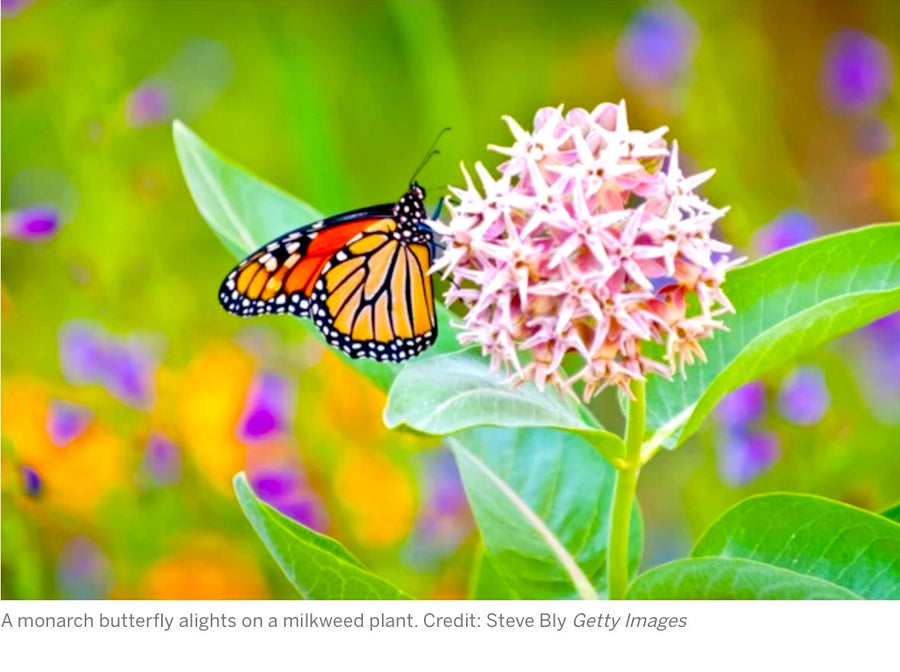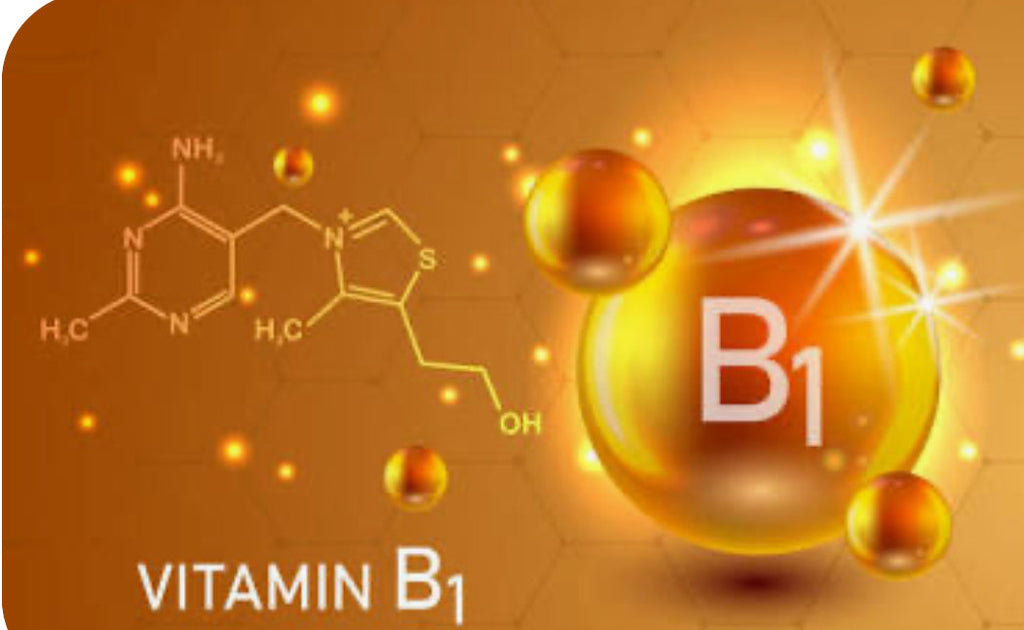How Does Glyphosate Harm Our Environment? - Part 2 - Blog # 71

Hello Everyone and welcome back to another Friday blog. Today let’s continue to look at what glyphosate is doing - not just to the human body - but to our environment - our soil, water and air - and the planet.
Okay. Let’s recap what we learned last week in part 1 - what glyphosate does to the human body - GMO (genetically modified) foods have a bacterial gene inserted to allow them to withstand glyphosate. These “Roundup-ready” crops include sugar cane, corn, tobacco, cotton, sugar beets, alfalfa, soy and canola. They can produce a version of protein (EPSP enzyme), depending on the bacterial gene inserted into the plant’s genome. Plants are able to create resistance factors, driving more glyphosate usage. Glyphosate is in > 750 products on the market. Many of these products contain other toxic chemicals even worse than glyphosate. Glyphosate is sprayed on 70% of our crops - manufactured into all kinds of products that we consume and wear - like cotton.
- It destroys our microbiome - it was patented as an antibiotic
- damages mitochondria - it is a mitochondrial toxin (mitochondria are ancient bacteria)
- disrupts production of important proteins and neurotransmitters - as it interferes with protein synthesis - inserts into our aromatic amino acids
- increases toxicity of everything else by inhibiting phase 1 detoxification by the liver by blocking a family of very important enzymes (cytochrome P-450).
- It further disrupts phase 2 detoxification, which involves sulfation - required to make it more water-soluble.
- It interferes with all sulfur pathways in the body - including sulfation of water - to create the healthy gel-state of water inside the cell that virtually creates a battery. We need to be able to sulfate cholesterol and vitamin D in our skin.
- It massively interferes with transport systems in the body, creating deficiencies and malfunctions. When we consume a food sprayed with glyphosate, it becomes embedded into our proteins, interfering with fertility and affecting the metabolic function of future generations, particularly 3rd and 4th generations.
- Since it is a metal chelator, it binds with minerals and heavy metals causing simultaneous toxicity and deficiency. It tends to let-go and dump these in the acidic environment of the kidneys, allowing arsenic exposure to kidneys. It also does this in the brain, dragging aluminum into the brain and releasing it. And... it is in EVERY kid’s cereal tested. Our little babies are eating this and it is building up in their tiny bodies.
In other words, it negatively affects all organ systems and depletes sulfur throughout the body. It causes brain fog, blocks detoxification by the liver, alters hormone balance and function - including sex hormones. It is an antibiotic and kills your healthy gut microbiome and blocks mitochondrial function! - it interferes with fertility and future generations! What is scarier than a toxic chemical that interferes with human reproduction - profoundly affecting the human race - negatively affecting biodiversity and basic metabolism of plants and microbes????!!!! Why would we ever allow this to be in anything we consume? In my opinion, there has not been a more damaging chemical to human health or our world! OMG
Now, let’s look at how glyphosate harms our environment and other species. After all, we are not alone on this planet.
- Metal chelator, it robs the soil and plants of inherent minerals such as zinc, magnesium, manganese, iron, cobalt and copper. When the soil is deficient, the plants end up deficient in these minerals. We eat the plant to nourish our body, yet the key minerals are missing. This is why most of us need to supplement.
- Depletes top soil - It disrupts the plant’s ability to uptake nitrogen and convert CO2 into C (carbon) for organic top soil and O2 (oxygen) for our air.
- Compromises soil microbiome - selectively kills good microbes while promoting pathogenic microbes, negatively modifies nutrient and mineral balance, compromising the health of plants. Glyphosate inherently creates a situation of simultaneous toxicity and deficiency. These minerals can be toxic if in the wrong place. Just like we do, they have a transport system and rely on using minerals as co-factors for many biological functions. When this is disturbed, they can’t survive, which enhances growth of fungi and invasive species.
- Depletes O2 - (oxygen) disrupts the plant’s ability to convert CO2 into oxygen for us to breathe. We dump highly nitrogen-enriched and even liquid nitrogen fertilizers onto the plants to force uptake of nitrogen. These fertilizers are produced from natural gas. Rain then washes this heavy nitrogen along with glyphosate into our waterways and oceans, modifying the nutrient balance for both plants and microbes. This allows the proliferation of cyanobacteria that block sunlight crucial for other plants survival, further depleting O2.
- Greenhouse gas - The byproduct of this is nitrous oxide - 300 times more damaging to our environment than burning fossil fuels!! “Nitrogen fertilizers have been a key factor in the increased yields achieved by modern agriculture, however they also represent one of the largest sources of greenhouse gas (GHG) emissions from global agricultural production resulting in significant emissions of nitrous oxide (N2O), a GHG with approximately 300 times the global warming potential of carbon dioxide (CO2).”
- Speeds top soil erosion - Soil experts report: “A rough calculation of current rates of soil degradation suggests we have about 60 years of topsoil left. Some 40% of soil used for agriculture around the world is classed as either degraded or seriously degraded – the latter means that 70% of the topsoil, the layer allowing plants to grow, is gone. Because of various farming methods that strip the soil of carbon and make it less robust as well as weaker in nutrients, soil is being lost at between 10 and 40 times the rate at which it can be naturally replenished. Even the well-maintained farming land in Europe, which may look idyllic, is being lost at unsustainable rates.”
- Promotes wildfires - “The primary ingredient in the Monsanto-made herbicide Roundup, glyphosate has been under scrutiny in both agriculture and forestry for years. It remains widely used, because while softwood species like pine and spruce can tolerate a certain dosage of the chemical, glyphosate can be effective in eliminating the growth of hardwood trees for decades.” It is widely used to “promote profitable coniferous growth, and eliminate hardwood species like aspen and birch.” This narrows the biodiversity of the forests, depleting important species of plants. It appears to promote the spread of wildfires as well - look at California wildfires for example.
- Negatively alters biodiversity - It kills off many beneficial microbes and plants that depend on the shikimate pathway, while allowing more pathogenic microbes to survive. Cyanobacteria flourish as do many fungi species and yeasts because they tend to be immune to glyphosate. It sinks deep in the ocean. This effectively blocks sunlight, further depleting oxygen from our air and carbon from our topsoil.
- Atmospheric contamination - We process GMO corn and sugar cane sprayed with glyphosate into animal feed and biofuels. They are evaporating and entering the atmosphere prior to being burned - it’s in all of us, the soil, atmosphere and rain. In 2019, researchers evaluated the atmospheric contamination over Brazil and stated that the “values can be considered high and dangerous to human health and to the environment.”
- Secondary source of environmental toxins - Glyphosate toxicity is further amplified by its metabolites, primarily AMPA (Aminomethylphosphonic acid) in the degradation pathway. This becomes a secondary source of contamination in the environment, promoting Pseudomonas and phytopathogenic (harms plants) fungi. AMPA affects human red blood cells, can lead to chromosomal aberrations in fish, found in the sediment, surface, and groundwater. Residues often remain in the food chain, causing deficiency in vitamins, minerals and other nutrients.
- Unintended consequences - Soil biology is very disrupted as it is toxic to beneficial micro flora and earthworms. It causes “Parkinson’s-like” symptoms in the earthworm. It damages the microbiome and impairs cognitive capabilities of bees - Further negative consequences are the Monarch butterflies who rely on the milkweed for laying their eggs. Milkweed grows wild in corn and soy fields…or did. So, glyphosate is getting sprayed directly on milkweed - this is where they lay their eggs - amphibians absorb nutrients directly through their skin - it’s in the water!
“With the loss of milkweed, the monarch population began a steep decline – dropping over 80% in the last 20 years. The monarch butterfly is now being considered for protection under the Endangered Species Act.”
“Studies show that there is a strong correlation between Glyphosate and Glyphosate formulations and serious health and environmental hazards, including disruption of hormonal systems and beneficial gut bacteria, damage to DNA, developmental and reproductive toxicity, birth defects, cancer and neurotoxicity. Glyphosate-based herbicides can harm all facets of an ecosystem, including the soil biology and composition, water, and non-target plants, aquatic organisms, amphibians, reptiles, invertebrates, animals, and humans. Glyphosate use could foster herbicide-resistant super weeds. Glyphosate is a patented desiccant (a drying agent) and could greatly increase the risk of fire. Glyphosate’s effect on the soil composition could lead to greater risk of runoff and erosion. Glyphosate and its metabolites can be highly active and mobile and persist for many years in the environment, depending on conditions. Using toxic Glyphosate and Glyphosate formulations could not only harm beneficial vegetation and wildlife but could also jeopardize public health and safety.”
We are significantly losing biodiversity among many different species from multiple phyla. Insects, amphibians, birds and even fungi are experiencing rapid and terrifying population declines!! Part of the reason is its persistence in soil. Scientists analyzed soil radio-labeled with glyphosate every week for more than 2 years. After 748 days, 59% of glyphosate was still present. 😳 - Monsanto claims it is gone after about 2 weeks, claiming it is largely metabolized by soil microbes. Flagrant lies -
In an essay titled “Apologies to the Grandchildren,” the ecologist William Ophuls wrote: “A fortunate minority gains luxuries and freedoms galore, but only by slaughtering, poisoning, and exhausting creation. So we bequeath you a ruined plant that dooms you to a hardscrabble existence, or perhaps none at all.”
What can we DO about this? How can we clear it from our planet, our atmosphere, our soil, our bodies and prevent our grandchildren and great-grandchildren from becoming sick or from not even being born?
Check out the U.S. right to know website here:
- Demand our representatives, senators and congressmen get toxic chemicals out of our food. Here’s a link. You can enter your address and it gives you a list of everyone in your district. Also, “every state has a change.org petition requesting the respective state governors to ban glyphosate. The United States has been slow to adopt the position of the World Health Organization. In fact, the Environmental Protection Agency holds the same position as Bayer-Monsanto. The EPA has repeatedly stated the glyphosate is safe, but it hasn’t always held that position. While the federal government is slow to move on accepting the science around glyphosate, several municipalities in the United States have restricted or banned glyphosate…Despite the federal government’s lack of urgency, private citizens have taken up the fight against Bayer-Monsanto to hold them accountable. Thousands of lawsuits have been filed against the company from people who use Roundup at work or on personal yard maintenance who have since developed Non-Hodgkin’s Lymphoma.” Demand your city end the use of glyphosate and other toxic chemicals. Locally - “Denton is the home of two Texas universities” - I’m a graduate of Texas Woman’s University - “and sits about 30 minutes north of Dallas. The city ended the use of glyphosate herbicide and is piloting an integrated pest management program that favors organic methods for city-owned parks.”
- Garden - get your hands in the dirt to enhance your own microbiome health - grow your own food, particularly herbs! They are so easy and delicious!
- Compost - compost your veggie scraps!! Put it on your soil and in your garden.
- STOP using it on your lawn! - mindblowing - you can still buy roundup and many other products containing glyphosate (along with more toxic chemicals) at your local hardware store. Reduce further insect decline!!! Grow native plants and create areas of natural habitats to encourage bees and other pollinators.
- Support regenerative agriculture - “a conservation and rehabilitation approach to food and farming systems. It focuses on topsoilregeneration, increasing biodiversity,[1] improving the water cycle,[2]enhancing ecosystem services, supporting biosequestration,[3]increasing resilience to climate change, and strengthening the health and vitality of farm soil.This can be a difficult transition, but is crucial in restoring our soil, returning animals to grazing.”
So, until next time my friends - how does your inner-garden grow? Detoxify your body…Drink, Drizzle, Digest HP-EVOO 2-4T raw daily, - use more for cooking - eat the rainbow of organic or wild-sourced veggies (7-9 C) and low-glycemic fruits (to get the rainbow of gut microbes!) Eat wild-caught, pasture-raised, grass-fed, get plenty of sunshine + supplement magnesium, zinc, vitamin D3 + K2, get your trace minerals and electrolytes with good sea salt *Himalayan was formed before plastics, eat foods high in lutein, drink 1/2 your body weight in oz of water, get a good pre/probiotic (if you have wiped out your gut microbes with antibiotics), consume indigestible fiber for your gut microbes, fermented foods for the post-biotics, adaptogens and methylation donors (kale, beets, lion’s mane…) to detox, enhance overall health and reverse aging and disease, exercise your body and mind, get morning sunlight, get your bare feet on the earth, add a few minutes of mindful meditation to your day to combat stress, take a hot Epsom salt bath and follow with a cold shower/plunge, remove EMF (electromagnetic frequency) devices and blue light, use IR (infrared) from incandescent lighting, candles (check for toxic chemicals), or fire in the evening to enhance sleep, and ...turn off the light!! #HP-EVOO
This blog is intended for informational purposes only. Discuss strategies with your Healthcare Practitioner.







Comments (1)
Julie,
Have you ever taken a tour of the Botanical Research Institute of Texas (BRIT)?
Curt